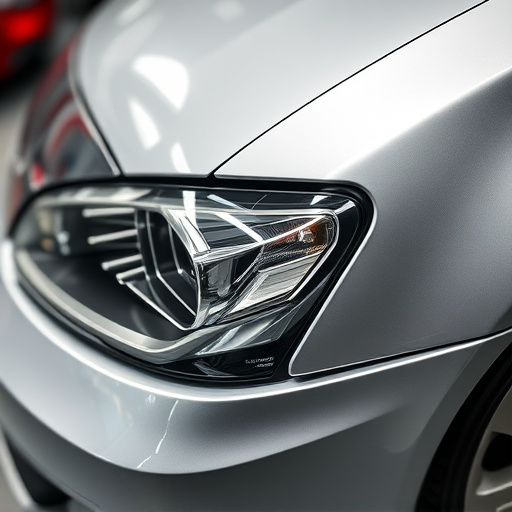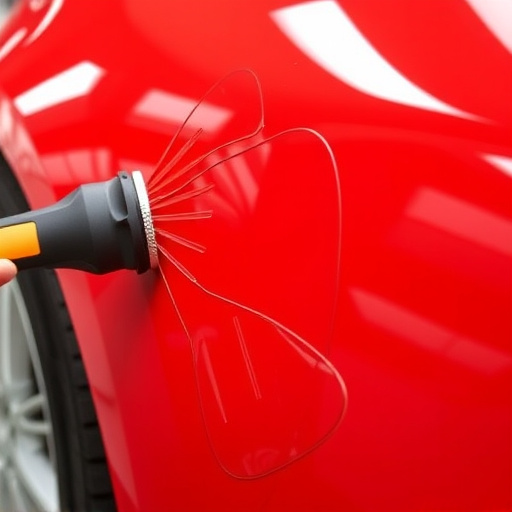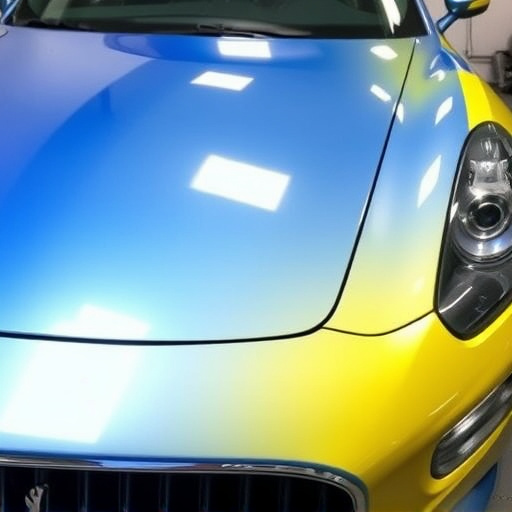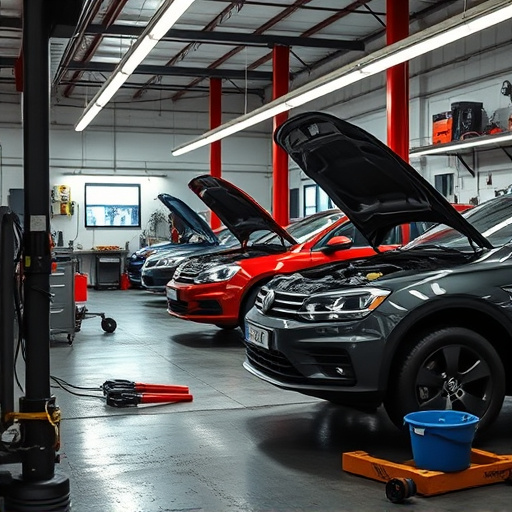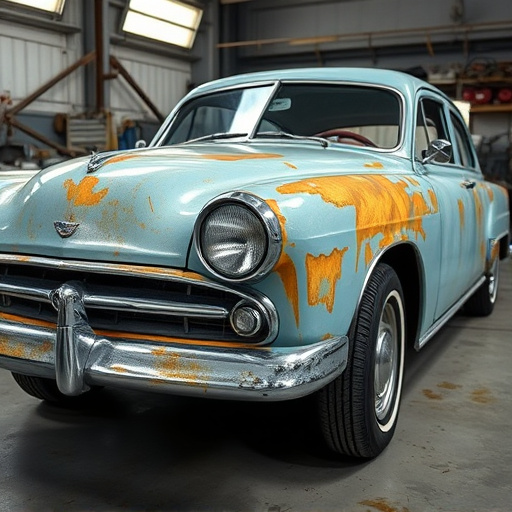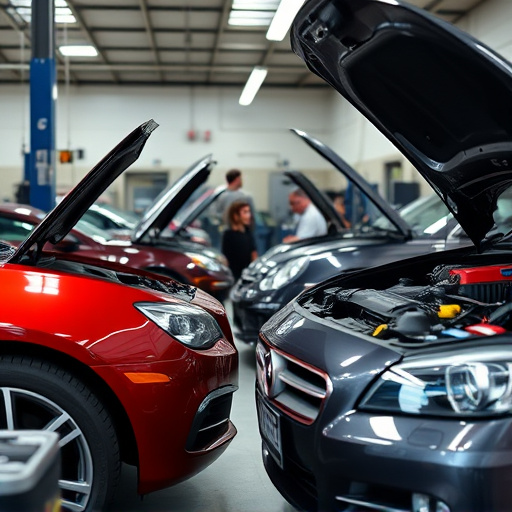Specialized knowledge is required for repairing Mercedes 48V system, a complex electrical architecture powering advanced driver assistance systems and electric motors in modern Mercedes-Benz vehicles. Safety measures like PPE, fire hazard inspection, ventilation, and proper grounding are crucial before repairs. Common issues include voltage fluctuations from faulty connectors or loose wiring; troubleshooting requires understanding core components and interactions. Regular maintenance and updates on technology advancements ensure safe, modern repairs for tire, fender, and bodywork services.
“Unraveling the intricacies of Mercedes’ 48V system repair is crucial for both professionals and enthusiasts. This comprehensive guide dives into the essential safety protocols, offering a roadmap for successful repairs. From understanding the basic functionalities to identifying common issues, we equip you with knowledge. Before initiating any fix, grasp the critical safety precautions to mitigate risks. By following these protocols, you’ll ensure a safe and effective Mercedes 48V system repair process.”
- Understanding Mercedes 48V System Basics
- Safety Precautions Before Repair
- Troubleshooting Common 48V System Issues
Understanding Mercedes 48V System Basics
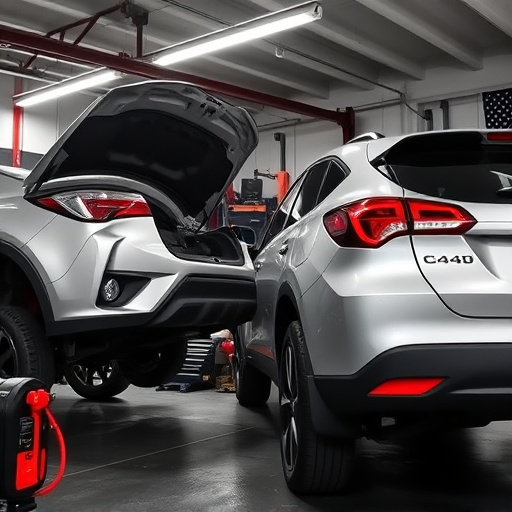
The Mercedes 48V system is a sophisticated electrical architecture that powers various functions within modern Mercedes-Benz vehicles. At its core, it acts as the backbone for advanced driver assistance systems (ADAS), electric motors, and high-voltage components. Understanding this intricate network is crucial when undertaking Mercedes 48V system repair, especially in the event of damage or a car collision repair.
For vehicle bodywork professionals, familiarizing themselves with the 48V system’s layout, components, and interactions allows for precise and safe repairs. This includes knowledge of how the system integrates with the conventional 12V electrical system and its role in enhancing safety features such as anti-lock braking systems (ABS), electronic stability control (ESC), and adaptive cruise control.
Safety Precautions Before Repair
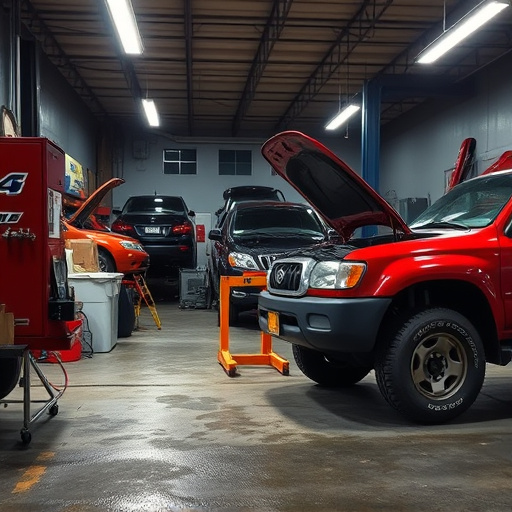
Before undertaking any Mercedes 48V system repair, it’s paramount to prioritize safety. This high-voltage system requires meticulous care due to its sensitive nature and potential hazards. Technicians must wear appropriate personal protective equipment (PPE), including insulated gloves, eye protection, and sometimes a full-body suit, to minimize the risk of electric shock or arc flash. The work area should be thoroughly inspected for any combustible materials or substances that could pose a fire hazard.
Additionally, ensuring proper ventilation is crucial, as working with electrical components can generate sparks and static discharge. Grounding the vehicle correctly and disconnecting the high-voltage battery are essential safety measures. For fleet repair services or car damage repairs involving the 48V system, specialized training and experience are required to prevent accidents and ensure the well-being of all personnel involved.
Troubleshooting Common 48V System Issues
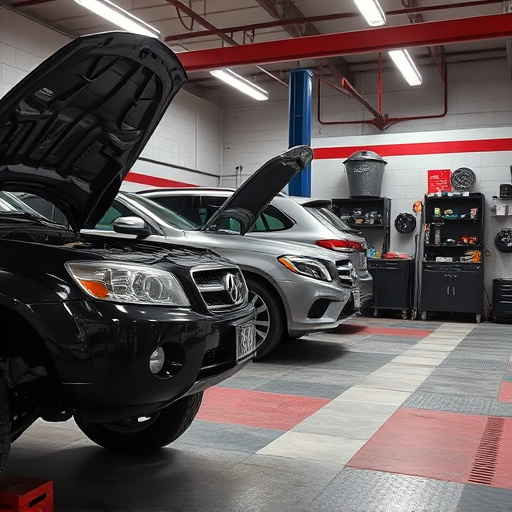
When it comes to troubleshooting common Mercedes 48V system issues, understanding the core components and their interactions is key. One frequent problem involves voltage fluctuations, which can be caused by faulty connectors or loose wiring within the intricate network of the 48V system. This often manifests as erratic performance in electric components, such as motors or lighting systems. Mechanics should begin with a visual inspection, checking for any signs of damage or exposed wires. A multimeter test can then verify voltage levels and identify any deviations from the expected norms.
Addressing issues early is crucial to prevent more severe problems down the line. Regular maintenance, including thorough checks of connections and insulation, plays a vital role in keeping the 48V system running smoothly. Moreover, for those providing Mercedes 48V system repair services, it’s essential to stay updated on advancements in technology and component replacements. This ensures that any repairs are not only safe but also compatible with modern vehicle standards, encompassing even specialized areas like tire services, fender repair, and car bodywork services when necessary.
When undertaking Mercedes 48V system repair, adhering to strict safety protocols is paramount. By understanding the fundamentals of this advanced electrical system and implementing the outlined precautions, repairs can be performed effectively while minimizing risks. With proper training and tools, technicians can efficiently troubleshoot common issues, ensuring a safer and more reliable vehicle for all Mercedes owners. Remember, prioritizing safety during 48V system repair is not just a best practice—it’s a necessity.

